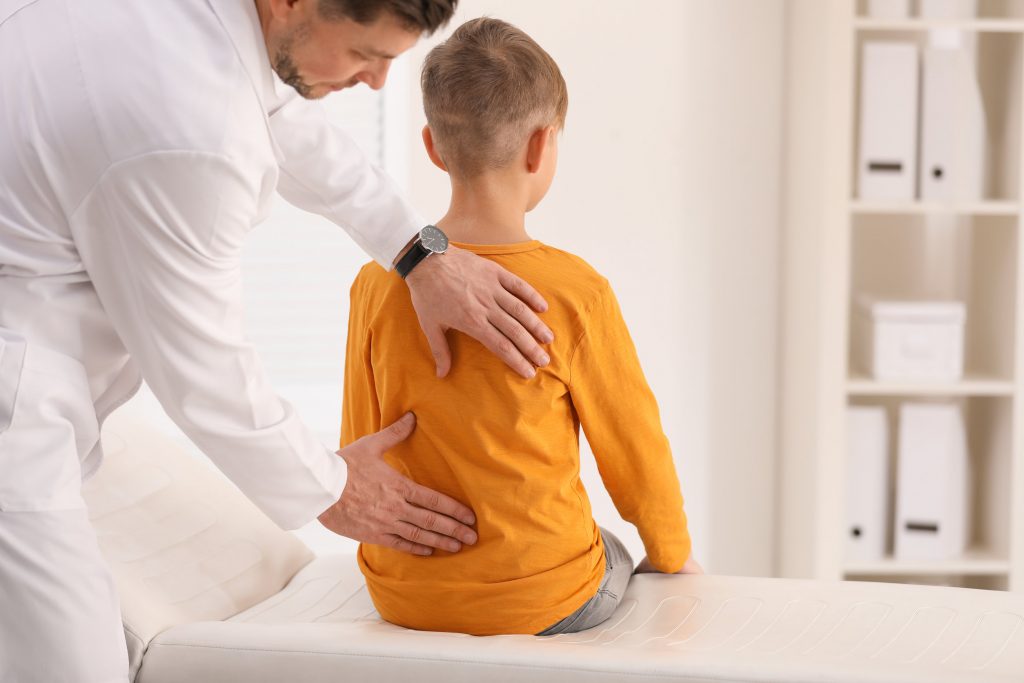Adolescent Scoliosis Best Fixed With One Surgery Instead of Multiple
Category: Scoliosis | Author: Stefano Sinicropi

Medical experts and spine specialists are always looking for new ways to improve on current techniques, especially when they want to improve the experience and outcomes for adolescent patients. Previously, the medical community thought that for kids between the ages of 8-11 years old, multiple surgeries with expandable rods was oftentimes best way to treat adolescent scoliosis to account for the child’s growing spine. A recent study out of Michigan revealed that one single surgery may not only be less taxing, but it may be safer and similarly effective in treating the curvature disorder.
Pediatric Scoliosis Surgery
Early-onset scoliosis is a spinal curvature disorder that can lead to significant spinal abnormalities or even death if it results in damage to the child’s heart or lungs. When the condition develops in young children who are still growing, sometimes it is treated with what is known as a growth-friendly surgery. During a growth-friendly surgery, expandable rods are placed in the spine to grow along with the child until enough development has occurred that the problem can be corrected with a spinal fusion procedure.
The growth-friendly surgeries may offer more benefits than potential drawbacks for very young patients, but in kids between the ages of 8-11, surgeries with expandable rods may no longer be considered the standard route. According to research out of the University of Michigan, the potential complications associated with surgery and follow-ups may not be optimal.
“For someone who may not understand the implications, 11 years old may still be considered small and young, so they may think it’s a no brainer to insert the expandable rods,” said G. Ying Li, M.D., service chief of pediatric orthopaedics at University of Michigan Health C.S. Mott Children’s Hospital. “However, the rods are associated with a lot of complications. Some types of rods need to be expanded surgically every six months, which brings repeated exposures to anesthesia and more infections from going through the same scar. Even the newer magnetic rods that can be expanded non-surgically have been found to have complications associated with the rods themselves. There are far fewer complications with a single spinal fusion.”
Li and a team of researchers analyzed the outcomes of 59 preadolescents with early-onset scoliosis, 43 of whom had undergone prior growth friendly surgeries. The team found that children treated with a single spinal fusion had greater curve correction and their spines were 50 percent straighter compared to those patients who had received growth-friendly surgeries first.
Different Outcomes
When comparing the two groups further, the differences were even more stark. For children who underwent a single spinal fusion, they had an average of 1.6 surgeries and 25 percent experienced complications, whereas the growth-friendly group had an average of 8.7 surgeries and 84 percent experienced complications. Overall, patients in the growth-friendly surgery group experienced eight times more complications and nine times more unplanned trips to the operating room.
Dr. Li and her team did note that the growth-friendly surgeries did allow for the child’s spine to continue to lengthen, which doesn’t happen with a singular spinal fusion.
“Patients who had growth-friendly surgery did have an increase in the length of their spine over time, whereas the spine stops growing after a spinal fusion, so this is a very important factor for families to consider – whether growth is more important than the complications,” said Dr. Li. “However, if you hear this difference in complications and the number of surgeries, I think most parents would lean towards the single fusion, which was also found to have a lower financial impact and burden on the families in the study.
The team concluded that while more research is needed, a “one and done surgery with a single spinal fusion may be the best option.”
If your child is dealing with scoliosis or you suspect that they are dealing with a curvature disorder, reach out to a spine specialist. Early diagnosis and monitoring are key to help prevent significant deformity. For more information or for help with your back issue, give Dr. Sinicropi a call today.